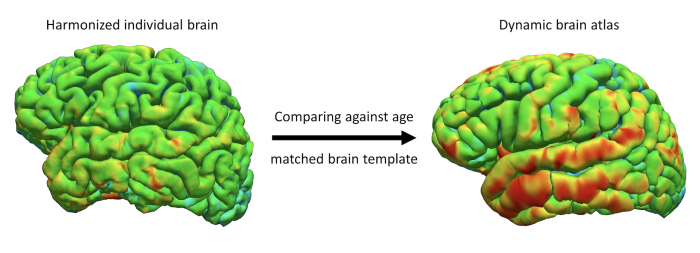Comparable results utilizing non-standardized data acquisition

In many fields of clinical routine, data acquisition is non-standardized. In medical imaging, physiological aspects of the subject or patient as well as technical parameters of the imaging device decisively influence measurement results. For example, magnetic resonance scanners of diverse manufactures, different scanners of the same manufacturer as well as varying parameters for controlling the same machine yield different results for the respective measurement. When keeping these technical aspects identical, small but significant differences in the measurements of the same patient still occur. They occur due to physiological effects like the hydration, time of day, and involuntary motion. Furthermore, not only the choice of software to analyze the data and its parametrization, but also the software-version and computer architecture have a significant influence on the measurements. This is why general recommendations for using scientific software and specific recommendations to improve reproducibility in neuroimaging research exist. Therefore, (large-scale multicentric) studies rely on unified hardware, sequence, and imaging protocols to harmonize the acquired data und possibly a centralized analysis to increase the statistical power and to ensure that differences between diseased subjects and healthy controls occur due to the disease only.
In this research area, a different approach is pursued by not harmonizing the acquired data explicitly. Through quantifying the systematic technical as well as physiological influences of the data acquisition, the variability of the data is evaluated. In order to achieve this, as much imaging data of as many as possible healthy subjects across as many as possible studies need to be analyzed. To get a first impression of the extent of the variability in measurement results, structural data of a few healthy subjects who participated in as many as possible different studies have to be analyzed. Subsequently, heterogenic data of as many as possible subjects and patients without neurological findings will be examined. To analyze the imaging data, common and well-known software packages like FreeSurfer or SPM will be used. Thereby, it will be possible to define standard ranges of brain structures on the one hand and on the other hand, by evaluating the quality of the imaging data, minimum requirements for the image acquisition can be defined. Possibly data which do not meet the minimum requirements can be used after applying methods to improve the data quality, for example after motion correction. It is not the goal to define specifications regarding the sequence or protocol explicitly, but to make heterogeneous MRI data comparable.





